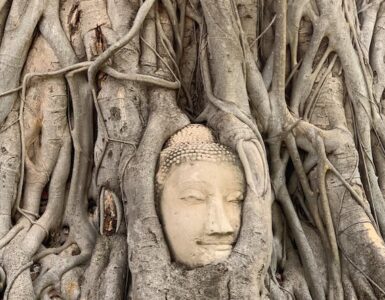Before India’s independence in 1947, the country was divided into 565 princely states.
In the course of the next 40 years, 22 Indian states were formed and most of them were created because of their unique language, heritage, and landscapes.
There is one Indian state which counts on its existence to bamboo trees, and rats.
On 20 February 1987, the Indian Parliament adopted the 53rd amendment of the Indian Constitution, which led to the creation of India’s 23rd state – Mizoram.
Background to the Mizoram State Formation
Mautâm is a cyclic ecological phenomenon that occurs every 48–50 years in the many northeastern Indian states which are covered by wild bamboo forests. During mautâm, a species of bamboo flowers blossoms in great volume across a wide area in the region.
Flowering is followed by fruiting to the eventual death of the plant and then bamboo starts to regenerate from the seeds. The rats love to feast on these seeds.
As there is no shortage of seeds (food), there is a sudden boom in the rat population. As the supply of bamboo flower seeds begins dwindling the rats converge on other food sources. They start feeding and attacking granaries and even destroying paddy fields, subsequently leading to famine and also causing diseases like plague.
The incidents that led to Mizoram State
As per records, Mautam had happened in 1863 & 1911 and in each case, the documents suggest that the flowering of the bamboo leads to a dramatic increase in the local rat population and mayhem in the region. Mautâm was expected to come again in 1958 to NE India.
The tribal leaders and elders in the Mizo region were cognizant of this phenomenon and cautioned the Government of Assam (Mizoram was previously part of Assam) of the impending danger in 1958. The government dismissed these warnings of the Mizo elders as tribal superstition.
When the time came, bamboo flowers bloomed, and rodents made their entry in large volumes and as expected started to destroy crops and caused diseases in humans.
The negligence of the government led to huge disgruntlement among the population and local leaders.
In 1959, a foundation called Mizo National Famine Front (MNFF) was set up to provide relief to the far-flung areas. Gradually, the famine front took shape into a political organization under its leader Laldenga. Eventually, Mizo Famine Front became Mizo National Front (MNF) in 1961 and started seeking independence. A bitter separatist struggle against the Indian Army ensued for the next two decades.
In 1971, the government agreed to convert the Mizo Hills into a Union Territory, which became Mizoram in 1972. Finally, the Mizoram Peace Accord was signed between the Indian Government and the MNF in 1986. Mizoram was declared a separate state on 20 February 1987 and Laldenga went on to become the first chief minister of the state.
The beautiful green state of Mizoram
Currently, Mizoram is known for its rich biodiversity, flora, and fauna. As per the 2021 report by the Indian government, Mizoram has the highest forest cover as a percentage of its geographical area of any Indian state – 84.53% of which the majority is bamboo.


The state is home to two national parks – Blue Mountain (Phawngpui) National Park and Dampa Tiger Reserve and six wildlife sanctuaries.
The Mizoram state had another Mautam in 2006. During this time, the government was much more prompt in dealing with the impending calamity.
Indian Army was pressed into service as an emergency measure to prepare the state administration. The administration arranged for the army to provide instructions on pest control.
Villagers were encouraged to grow food crops like turmeric and ginger, partially as an alternate source of income, and also because these aromatic spices ward off rodent raids.
Rodent outbreaks associated with bamboo flowering are not restricted to Mizoram, instead, it regularly occurs in the nearby Indian states of Arunachal Pradesh, Assam, Manipur, and Nagaland as well as in countries like Laos, Japan among others.
Wrapping Up
One lesson that we should take from this story is the significance of knowledge of indigenous people. While designing and implementing solutions, the experience of local people should be duly considered and applied.
Indigenous knowledge is based on experience that is often time tested and highly contextual to local culture and environment. The knowledge is often passed from generation to generation usually by word of mouth and cultural rituals and if this wisdom is ignored, it can lead to consequences that can be disastrous.
If authorities would have attended to the advice of Mizo leaders, the history of the Mizoram state could have been different.






Add comment